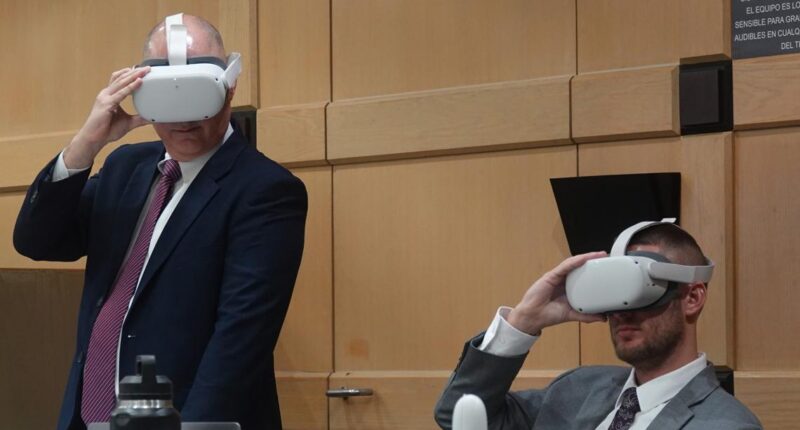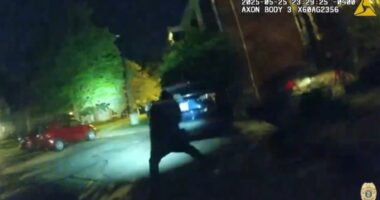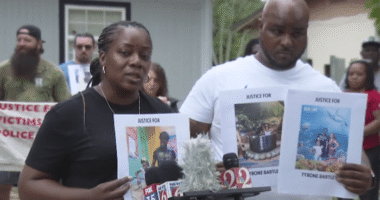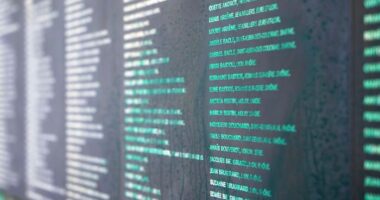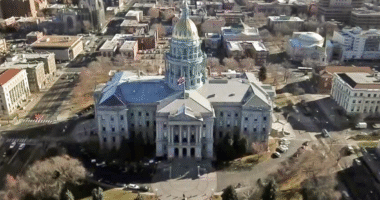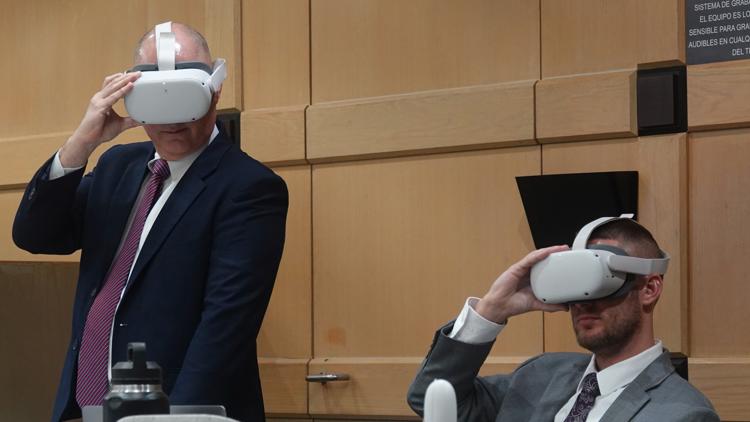
Stacey Wales stood at the lectern in a courtroom in Arizona, holding back her emotions as she pleaded with the judge to give the individual who had fatally shot her brother the highest possible penalty for manslaughter.
To the surprise of those present in the Phoenix courtroom, a computer-generated video featuring an image of her brother, Christopher Pelkey, then played, conveying a message of forgiveness to the shooter.
>> Download the 12News app for the latest local breaking news straight to your phone.
The judge expressed his admiration for the video and subsequently handed down a 10.5-year prison sentence to the perpetrator, exceeding the prosecutors’ initial request. Shortly after the proceedings on May 1, the defendant’s attorney submitted a notice of appeal.
RELATED: AI-generated video of road rage shooting victim addresses killer in court
Defense attorney Jason Lamm won’t be handling the appeal, but said a higher court will likely be asked to weigh in on whether the judge improperly relied on the AI-generated video when sentencing his client.
Courts across the country have been grappling with how to best handle the increasing presence of artificial intelligence in the courtroom. Even before Pelkey’s family used AI to give him a voice for the victim impact portion — believed to be a first in U.S. courts — the Arizona Supreme Court created a committee that researches best AI practices.
In Florida, a judge recently donned a virtual reality headset meant to show the point of view of a defendant who said he was acting in self-defense when he waved a loaded gun at wedding guests. The judge rejected his claim.
And in New York, a man without a lawyer used an AI-generated avatar to argue his case in a lawsuit via video. It took only seconds for the judges to realize that the man addressing them from the video screen wasn’t real.
Experts say using AI in courtrooms raises legal and ethical concerns, especially if it’s used effectively to sway a judge or jury. And they argue it could have a disproportionate impact on marginalized communities facing prosecution.
“I imagine that will be a contested form of evidence, in part because it could be something that advantages parties that have more resources over parties that don’t,” said David Evan Harris, an expert on AI deep fakes at UC Berkeley’s business school.
AI can be very persuasive, Harris said, and scholars are studying the intersection of the technology and manipulation tactics.
Cynthia Godsoe, a law professor at Brooklyn Law School and a former public defender, said as this technology continues to push the boundaries of traditional legal practices, courts will have to confront questions they have never before had to weigh: Does this AI photograph really match the witness’s testimony? Does this video exaggerate the suspect’s height, weight, or skin color?
“It’s definitely a disturbing trend,” she said, “because it could veer even more into fake evidence that maybe people don’t figure out is false.”
In the Arizona case, the victim’s sister told The Associated Press that she did consider the “ethics and morals” of writing a script and using her brother’s likeness to give him a voice during the sentencing hearing.
“It was important to us to approach this with ethics and morals and to not use it to say things that Chris wouldn’t say or believe,” Stacey Wales said.
Victims can give their impact statements in any digital format in Arizona, said victims’ rights attorney Jessica Gattuso, who represented the family.
When the video played in the courtroom, Wales said only she and her husband knew about it.
“The goal was to humanize Chris and to reach the judge,” Wales said.
After viewing it, Maricopa County Superior Court Judge Todd Lang said he “loved the beauty in what Christopher” said in the AI video.
“It also says something about the family,” he said. “Because you told me how angry you were, and you demanded the maximum sentence, and even though that’s what you wanted, you allowed Chris to speak from his heart as you saw it.”
On appeal, the defendant’s lawyer said, the judge’s comments could be a factor for the sentence to be overturned.
Associated Press reporters Sarah Parvini in Los Angeles, Sejal Govindarao in Phoenix and Kate Payne in Tallahassee, Florida, contributed to this report.
Watch 12News for free
You can now watch 12News content anytime, anywhere thanks to the 12+ app!
The free 12+ app from 12News lets users stream live events — including daily newscasts like “Today in AZ” and “12 News” and our daily lifestyle program, “Arizona Midday”—on Roku, Apple TV and Amazon Fire TV.
12+ showcases live video throughout the day for breaking news, local news, weather and even an occasional moment of Zen showcasing breathtaking sights from across Arizona.
Users can also watch on-demand videos of top stories, local politics, I-Team investigations, Arizona-specific features and vintage videos from the 12News archives.
Roku: Add the channel from the Roku store or by searching for “12 News KPNX.”
Amazon Fire TV: Search for “12 News KPNX” to find the free 12+ app to add to your account, or have the 12+ app delivered directly to your Amazon Fire TV through Amazon.com or the Amazon app.
More ways to get 12News
On your phone: Download the 12News app for the latest local breaking news straight to your phone.
On your streaming device: Download 12News+ to your streaming device
The free 12News+ app from 12News lets users stream live events — including daily newscasts like “Today in AZ” and “12 News” and our daily lifestyle program, “Arizona Midday”—on Roku and Amazon Fire TV.
12News+ showcases live video throughout the day for breaking news, local news, weather and even an occasional moment of Zen showcasing breathtaking sights from across Arizona.
Copyright 2025 Associated Press. All rights reserved. This material may not be published, broadcast, rewritten, or redistributed.
